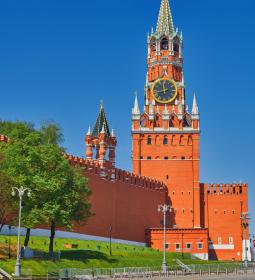Foreign diplomats and merchants who arrived in Moscow were often surprised and admired by the unusual Western world of the cuisines with which they were treated at the sovereign's table. Here you could find fried swan, fish meat, salted plums and bear liver, fake rabbits and roosters, jam from pickles and much more.
For this review, we have selected five of the most unusual recipes and are going to tell you the story of their appearance.
Fried swans
The ambassador of Habsburg Austria and part-time Holy Roman Emperor of the German nation Sigismund von Herberstein after his visit to the court left detailed memories of the features of Russian life - both the palace and eminent boyars, merchants and the priesthood. It happened in the summer of 1526.
It was difficult to surprise the diplomat of the richest and most noble court of Europe, but the Muscovites managed to achieve success with the help of fried swans. Sigismund wrote in his memoirs that the feast began with brandy, which apparently served as an aperitif at that time. After that, the notorious birds were carried out.
On the prince's table put at once three equally served dishes. Vasily made an incision on each to assess the quality of cooking and choose the best. The remaining two were removed to other tables, and the chosen one was cut into small pieces and surrounded the guests, leaving the best and most fatty and fragrant piece to the ruler.
Unfortunately, the recipe was lost. Hunters know that meat is practically not suitable for food. Probably, the cooks at that time knew a secret that allows you to soften the game.
Fake fish meat

For counterfeiting and forgery of royal seals and stamp documents in pre-Petrian times, punishment was supposed to be exceptional in its cruelty. The criminal was taken to the square, stripped naked, tied to a chair, inserted into the throat of a copper funnel and poured into a mug of molten lead. In rare cases, the funnel was placed not in the mouth, but in another hole of the body, which did not affect the result: the person irrevocably and finally died in severe agony.
Meanwhile, the court had its own manufacturers of fakes. It is known that more than half of the year a churched person spends in fasting. This applies equally to nobles, kings, priests and peasants. But if the churchmen and the common people, without thinking slyly, blew a voluntary-compulsory diet, the kings allowed themselves to be somewhat cunning.
For example, they had a way to turn fish into a speed room without any witchcraft. Such a product was called tel- that is, resembling a body,meat. They cooked by extracting bones from the fish and turning them into a mushy state. In the resulting slurry, onions and saffron were added, laid out in special forms to resemble a ram, goose, hare or pig, and fried in vegetable oil (flax or sunflower) in copper pans.
According to the memory of the Czech Tanner, such a fake could be confused with real veal. Historians of cuisine do not find such recipes in Western and Eastern cuisines, so it does not know analogues.
Botvinya for the Sovereign
Alexander the First, who ruled in the Russian Empire from the moment of the murder of his father Paul in 1801 and until 1825, was of German origin, but by upbringing (this issue was dealt with by the natural German Empress Catherine the Great) was a true Rusak who adored Russia in everything, as befits the ruler of our great country.
One of the weaknesses of the Blessed (the nickname of our hero) was botvinya - the simplest soup from the arsenal of peasants of poor and landless central provinces. It is served cold, usually in summer. It is made from beet leaves with sorrel, finely chopped pickle, green herbs. It is slightly boiled, poured with white kvass - and that's it, the soup is ready. In the version for the king, a snack with botvinya was a white-fisherman, that is, a sturgeon.

There is a historical anecdote. It is said that Alekander was friendly with the ambassador of the British Empire and in a conversation with him noted that the ambassador never had to try it. Therefore, when once again cold soup was served in the palace, the autocrat sent the pan to his friend. That's just the cook pre-heated it before serving, so that the impression was hopelessly spoiled.
Salted watermelons, plums and... tea with cucumbers
We are cold in winter and summer. But there were no refrigerators until the late 50s (not counting the party-state elite), so fresh fruits, vegetables and generally products were available for a very limited time. But conservation flourished: salted and marinated everything that comes to hand. Pickled and salted cucumbers with tomatoes have survived to this day, but salted watermelons are in the past. Why? These fruits at that time were grown in Astrakhan and delivered to the royal table by galleys. Experiments on cultivation on the site were not crowned with success, alas.
Paradoxically, there was no problem of bringing watermelon fresh - but there was almost a century-old ban on them. The Moscow Patriarch believed that this fruit (or berry, not the essence) resembles the cut off head of John the Baptist. Therefore, it was necessary to change the appearance, marinating or salting the whole thing in honey with garlic, abundantly giving salt.
Around the same time, but for utilitarian reasons, salted and plums with peaches.
Alexander I's brother, Tsar Nicholas under the same number – the one who led Russia to the Crimean War and guaranteed defeat with his conservatism – was a food pervert, as they would say now. He did not eat sweets, but pickles, especially cucumbers, ate a snack with hot tea.
Unicorn horn and bear liver

They say that Pope Clement the Seventh was treated with crushed emeralds from gastric colic - it was believed that this is a wonderful cure for all intestinal diseases. The sharp edges of the crushed precious stones cut through the pontiff of the intestine, and he quickly went to the forefathers.
Kings were luckier: emeralds were considered too valuable and were not suitable for medicine. But the drugs from the horns of the unicorn were revered as a healing thing from all sores, and to a heap and an analogue of bezoar, which saves from all poisons.
At the end of the XVII century, the powder was regularly used by Alexei Mikhailovich and his inner circle. Most likely, under the guise of a unicorn, clever pharmacists sold the king and boyars a narwhal horn, or even just a crushed goat. One way or another, but the medicine was sold by weight and cost a double measure of gold. Not bad for the horn of a goat, right?
There was also a bear liver. Hunters know that now the liver of clubfoot is not accepted - it is believed that the concentration of vitamin A in it causes a person polyallergy and problems with his own liver. But the Tsar-liberator was a fan of wild hunting. Not when the bear has already been prepared and all the cases - to put him in the carcass from a large-caliber gun, but the real one, when the game is pursued for weeks. Having killed the bear, the emperor personally freshened it, cut out the liver (it was baked for him on the fire right there) and ate. They say the taste of the product is nasty. Perhaps he believed that in this way he would become stronger?









